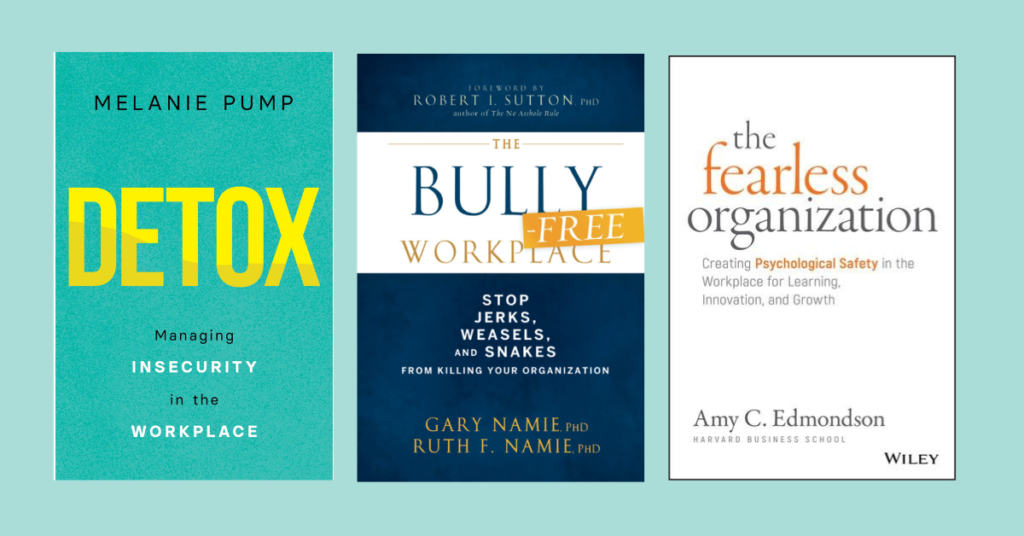Women Leadership Series
Women leaders working in toxic environments face a double bound. On one side, they must find a way to respond to a hostile climate effectively. On the other, they must maintain equanimity when leading their teams. Some women, without knowing, might contribute to exacerbating negative working cultures. This article addresses what women leaders can do to recognize and navigate the rough waters of toxic work environments while taking personal responsibility for their impact as leaders.
What Is a Toxic Environment?
A toxic work environment is one where employees find it hard to work and to progress in their careers due to the negative atmosphere created by coworkers, supervisors, or the company culture itself.
The psychosocial work environment refers to the complex tapestry of the organization’s workgroup culture, work design, working conditions, and social interactions. In addition to psychological safety, psychosocial safety relates to freedom from hazardous risks that cause psychological and emotional injuries. Bullying, sexual harassment, and other ways of emotional abuse in the workplace are part of the social interactions sphere in organizations.
How does Toxicity Show in the workplace?
According to Dr. Gary Namie, co-founder, and director of Workplace Bullying, the following are psychosocial hazards to watch for in organizations:
- Hostile organizational and workgroup culture
- Excessive workload
- Bullying, sexual harassment, and violence at work
- Lack of recognition and rewards
- Lack of social support from management or colleagues
- Lack of control or extreme control over how work gets done
- Lack of participation in the decision making
- Negative leadership and supervision
- Job insecurity
How Does Toxicity Impact Women?
It is undeniable that female leaders face significantly more challenges in the workplace than men. Many women lose confidence in their abilities to contribute when they constantly feel they do not belong. For women of color, it is even more difficult. A McKinsey study reveals that women of color continue to have a worse experience at work because they are more exposed to the negative impact of discrimination and unconscious biases compared to white women.
Much of the literature written about female leadership tend to focus on how to fix women’s behaviors. While this approach allows women to take charge of what is under their control, it only addresses half of the equation. For women of color to thrive in the workplace, they need an environment that fosters the inclusion of racial and gender identities and where everybody feels valued and celebrated.
We can’t deny the work environment’s impact on employees’ wellbeing. Lisette is a very talented team leader working in a refinery where she is the only woman. During meetings, she is not keen to share her opinions because her coworkers interrupt her or ignore her comments when she speak up.
What Roles do Women Play in Toxic Cultures?
Women stand on two sides of the pendulum. On the positive side, women behave according to the stereotypes tending to categorize them as having more communal traits than men, such as being likable, sensitive, and supportive of others. For instance, the McKinsey study states that more women managers than men are stepping up to support their teams by taking more consistent actions to promote wellbeing. They provide support for team members dealing with burnout and navigating work-life challenges. Also, more women are involved in implementing DEAI initiatives in the workplace, such as supporting employee resource groups, organizing events, and recruiting from underrepresented candidate pools. They tend to be strong advocates for discrimination and abuse.
Paradoxically, there is the shadow side of the pendulum of how some women leaders show at work. Results from the 2021 WBI U.S. Workplace Bullying Survey indicated that women bully women at twice the rate they bully men. We know from our own experiences that women tend to be stricter with women. I recall having a woman boss early in my career that was unreasonably demanding with working hours and standards. Her demands made it hard for me to attend to my child’s needs. I remember being the last to pick up my toddler from daycare, creating a very stressful time for my family and me.
Female leaders with strong perfectionist tendencies cause harm to their teams by demanding unrealistic standards. Other women leaders are never happy enough with their team’s performance and are very difficult to please.
All that to say that extreme tendencies are derailers for women leaders. Unless they become aware of how their behaviors and attitudes impact their team, they remain blind-sided, unrecognizing how they create toxic work environments.
How Can Women Leaders Navigate a Toxic Culture?
I tend to believe that nobody sets out to create a toxic company culture, and often, there isn’t an easy Band-Aid one can apply to eradicate one. Women might not have enough social capital or influence to turn things around in toxic workplaces, especially when senior leaders do not enforce compliance for perpetrators or a there are lack of policies to navigate behavioral expectations. Still, they can take steps to address their situation and decide how to better advocate for themselves and the teams they lead.
If some of this information resonates with you, there are many constructive ways to navigate complex working cultures. Consider the organizational context and your team to define the best strategy and action plan.
Outside of Your Team
- Pay attention to the qualities of the social interactions in your workplace. Become aware of the negative behaviors that prevail. Be transparent by describing them and recognizing how they impact you.
- Assess how safe you feel in your workplace. A helpful tool is the work of Amy C. Edmonson and her test to measure psychological safety.
- Reframe the impact of the negativity around you. A leadership coach can help you stay grounded. With the support of a coach, you can identify effective ways to build personal resilience.
- Even as hard as it can be, do not lose your voice. Be willing to speak up.
- Get in touch with your values and needs. Understand your limits. Set boundaries and say no when necessary.
- Consider documenting unacceptable behavior and be ready to report it when they cross your boundaries.
- Find allies from top management who believe in you and are willing to support you and back you up.
- Define when is enough. Sometimes, walking away is the only way to deal with unbearable circumstances.
- Read, learn, and become educated. Information is power and will help you remain empowered to become a positive change agent. Here are some resources to expand your awareness of this topic.

Inside of Your Team
- Create a vision for the type of leader that you want to become. Focus on your strengths.
- Be accountable for your own behaviors. If you are recognizing your own tendencies to push people around or treat them harshly, make corrections. Sometimes women are harder with other women. It doesn’t have to be that way.
- Identify one or two behaviors you want to improve and commit to practicing them daily. Small steps taken consistently can take you far. Consider working with a coach to support your efforts.
- Become aware and accountable for how you might be contributing to creating a toxic culture. For example, if you are a perfectionist leader, limit the number of revisions and learn to delegate more.
- Take steps to build psychological safety for your team. Melanie Pump offers the following recommendations:
– Make mistakes and bad ideas acceptable.
– Recognize reasonable efforts and show personalized appreciation.
– Model healthy behaviors.
– Be transparent.
Even when immersed in a toxic environment, as a female leader, you can stand tall by knowing your values, strengths, and growth areas. While there might be plenty of reasons to fall victimized, you will be better off by tapping into your inner resources and acting from a place of empowerment.
Women leaders have the potential to transform toxic environments into workplaces that instill respect, dignity, and inclusivity one step at a time. Elizabeth Lesser wrote:
“Women often have different ways of being in the workplace, the family, and the society, in a more inclusive, emotional manner. That way has been denigrated and ignored precisely where it is most needed”.
Sometimes, the most difficult times can open our hearts and help us realize that we have choices. In moments of crisis is when we have the best chances to waking up and rise, even if the best way to deal with a toxic culture is to walk away!
